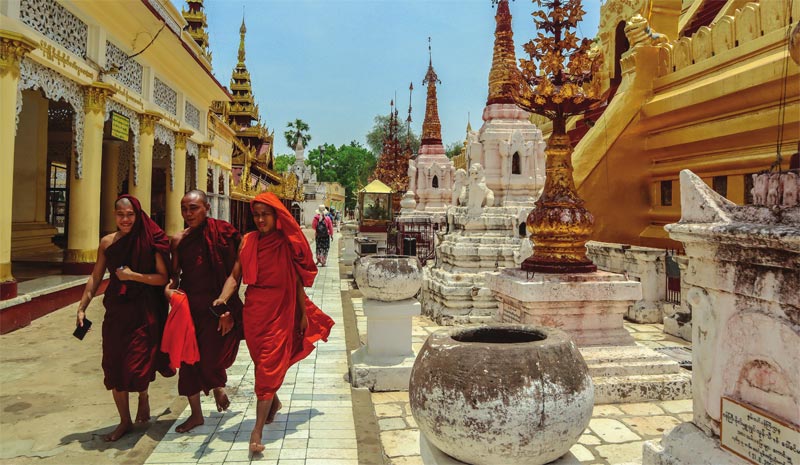I CAME ACROSS AN IMAGE CAPTURED IN AN OLD POSTCARD PORTRAYING THOUSANDS OF STUPAS SET IN GREEN FIELDS SWEPT BY GOLDEN RAYS OF SUNSHINE AND EMBLAZONED WITH THE NAME “BURMA” ACROSS IT. I WAS FASCINATED.
I must go to this place I said to myself. Myanmar (formerly Burma), it seems, is not popular as a tourism destination for Asian people these days however the archaeological site consisting of more than 2,000 temples is a favoured destination for the world traveller.

I flew to Yangon, the capital of Myanmar and continued my journey with an 8 hour trip by overnight bus, arriving in Bagan at dawn. Even at that early hour, there were many alternative transport options to choose from with taxis, charter cars and horse-drawn carriages ready to take me to see the sunrise in Minnanthu village. Having enjoyed the morning views from Bagan, I joined some villagers to check out the work of the residents.


First, I had to learn the essential words in any language and got my tongue around pronouncing Min-Ga-La-Ba, which means “Hello” in Burmese, and Ce-Zu-Ba meaning “Thank you”. These turned out to be the two words that I used the most during my trip. Armed with this rudimentary vocabulary, I learned about Longyi; the Sarong which became Myanmar’s traditional attire. I had a go at making traditional cigarettes containing tobacco and fragrant roots wrapped in corn leaves and was shown the process of using Thanaka, a natural sunscreen made from ground bark. Thanaka is a yellowish-white cosmetic paste you will find in use almost everywhere in Myanmar which, formed into a variety of patterns, has become a symbol of beauty for the local people.
It was time to explore some temples and I started at the Sulami Phaya Temple, home to 4 giant Buddha statues, and moved on to the large Dhammayangyi Temple. The temple that impressed me most in Bagan was the Ananda Temple, built in 1091, it has a gold-plated roof and distinctly European influence in its architecture.



A ticket to enter the Bagan area costs 25 USD, and for this you can enter any temple you wish. You can no longer take some of the photographs you may see on the internet because it is now forbidden to climb onto the top of temples to take pictures. I met a local man who took me to enjoy the sunrise at a small temple in exchange for buying a few souvenirs he was selling. Af- ter staying for three days in Bagan, I would suggest not only visiting the famous temples. Throughout the city there are many temples that you can see without needing a tourist ticket. It’s also a good idea to rent an electric scooter to get around, it only costs 10 dollars a day and avoids the need to pay for petrol.
I continued with a visit to the Bupaya temple, which was rebuilt in 1975 after a severe earthquake. The temple lies on the banks of the Ayeyarwady River, an area near the traditional market with its own vibrant life. I ended my trip with a visit to the majestic gold leaf gilded stupa of the Shwe Zi Gon Pagoda, followed by a 2 hour drive to the southeast of Bagan, to visit the Mount Popa National Park and home to an extinct volcano.
One of my most enduring memories of Burma is the view from Old Bagan to Mount Popamost and the most spectacular sunset I have ever seen.
Article by Sofian Hadi